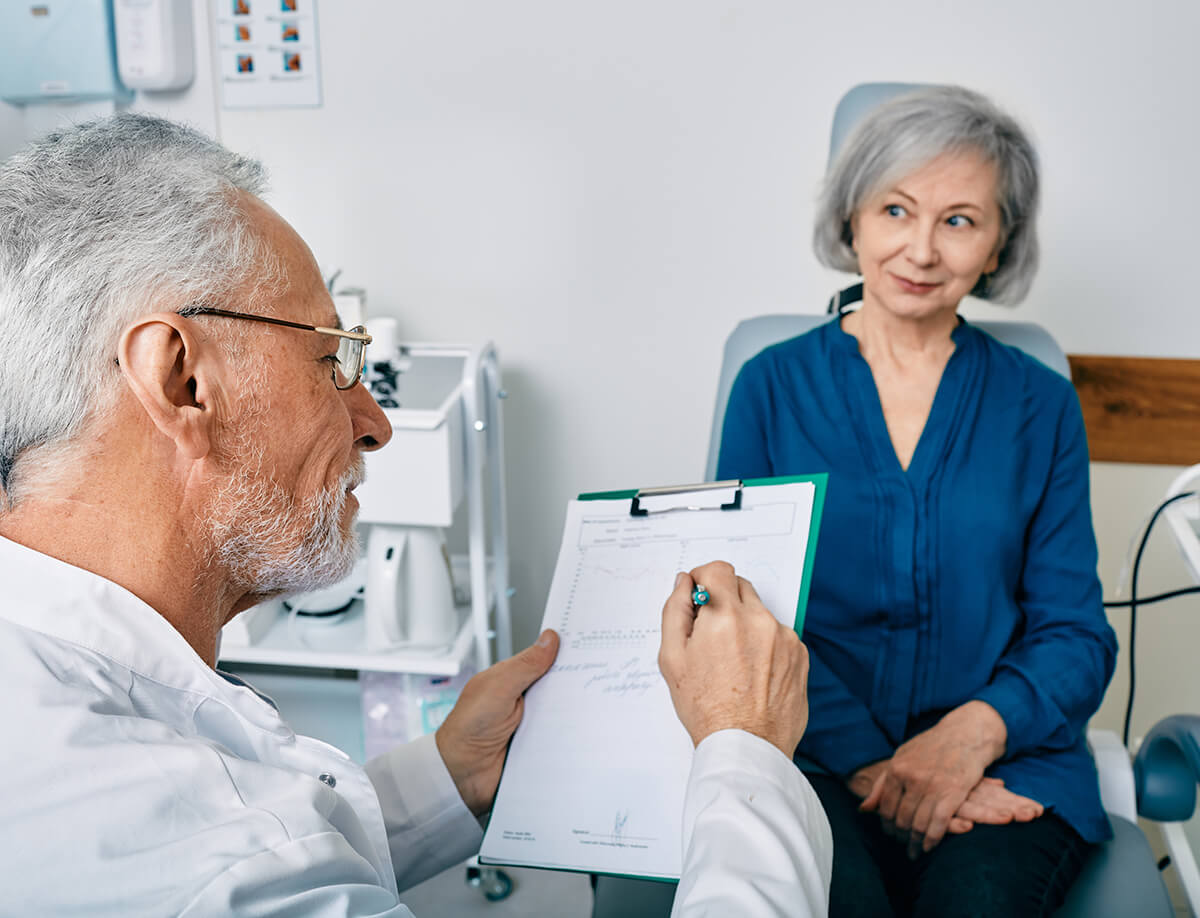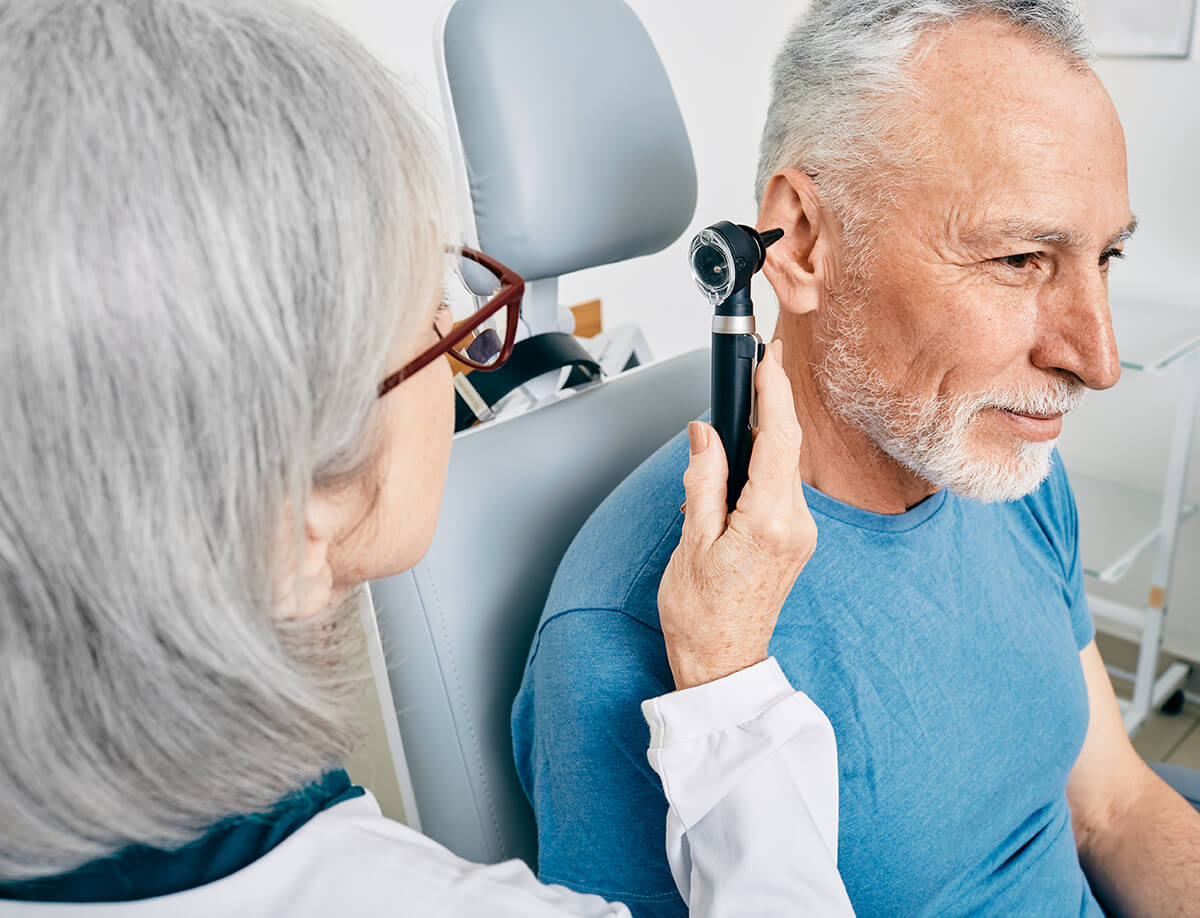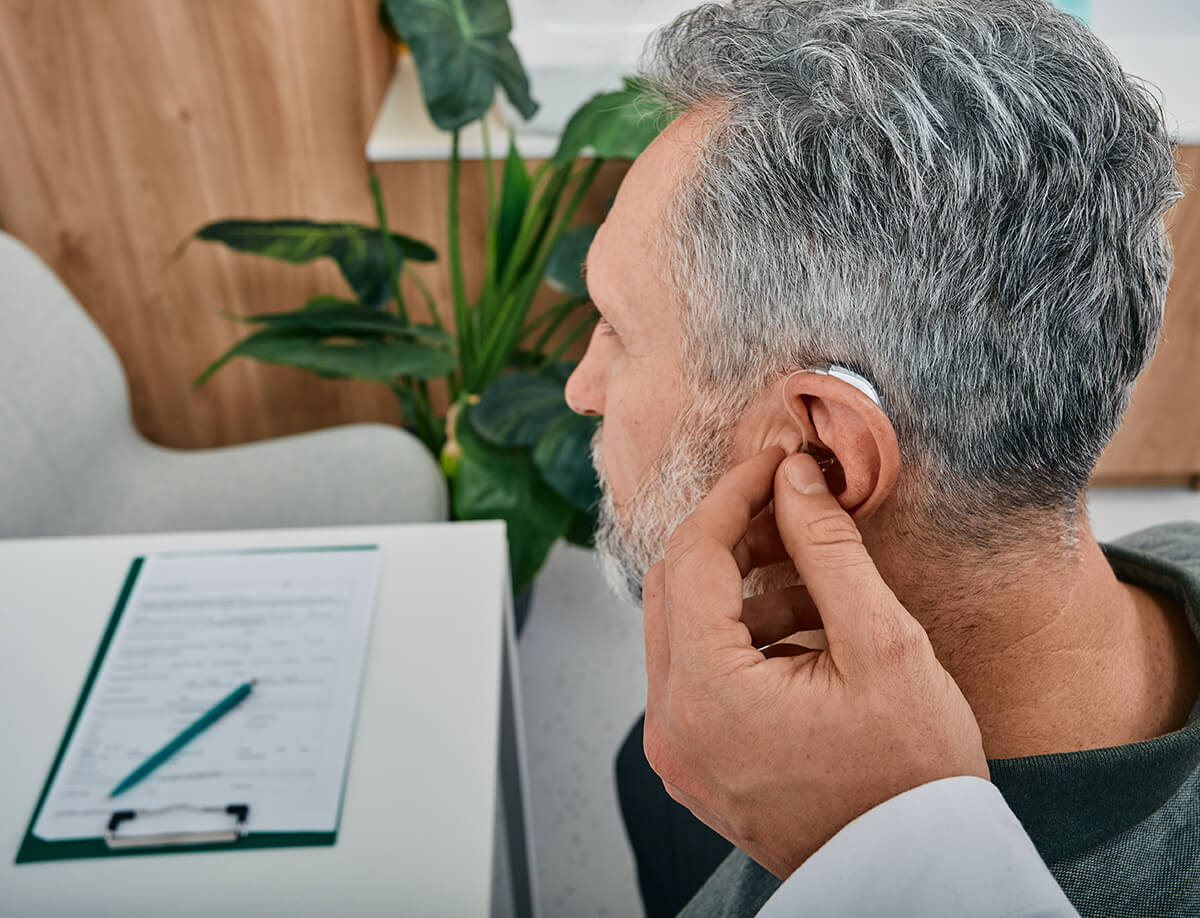What to Expect at a Hearing Test
Hearing tests are a painless process! Thoroughly evaluating your hearing capacities is the first step towards treating hearing loss. This noninvasive process measures your hearing abilities in each ear which provides more information about what your hearing needs are.
We understand that seeing someone for your health can produce feelings of nervousness and anxiousness. But by knowing what you can expect from a hearing test, you can feel better prepared and at ease going into your appointment.

Health Intake
Like most medical appointments, a hearing test starts with a general health intake process. This includes completing intake paperwork about your health history as well as discussing your concerns with the hearing healthcare specialist. You will be asked about a range of factors including: any family history of hearing health issues, existing health conditions, medications you take, the symptoms you are experiencing etc. In addition to your health background, you’ll likely discuss lifestyle factors that can impact hearing health: type of environment you work in, social activities you regularly engage in, exercise, hobbies etc. This information can help identify potential factors that are affecting your hearing health. Additionally, this information informs the treatment options that are best for you.

Ear Inspection
Before the hearing test, your hearing healthcare provider will inspect your ear. Using an otoscope, an instrument with a flashlight that is inserted in the ear, a specialist will take a look in the ears. They will check for any physical obstructions that could be preventing sound from being absorbed and processed. This can include an accumulation of earwax, bone growths, or ear infections which prevent sound from traveling through the ear canal and reaching the inner ear. Ear obstructions can cause conductive hearing loss which is often temporary. If necessary, your hearing healthcare provider will remove earwax before proceeding with the hearing test.
Treatment is a key way to address and alleviate the impact of hearing loss on relationships. It provides significant hearing support that strengthens communication. People can spend quality time, participate in activities together smoothly, and be more present. Doing even the most mundane things like watching TV or a movie with others is easy and accessible. This nurtures intimacy and closeness which improves relationships.

Hearing Test
There are a few types of hearing tests that are used to evaluate hearing capacities. One of the most common tests is the pure tone audiometry assessment. This involves wearing headphones while sounds are played at different pitches and frequencies. Guided by your hearing healthcare provider, you will be asked to indicate what you are able to hear by either raising your hand or pressing a button. This measures the softest sounds you are able to hear, establishing your hearing thresholds. Your results will be captured in real time and presented to you once the test is complete.
Today’s hearing aids offer numerous innovative features that strengthen hearing and deliver enhanced quality sound in environments that are noisier and in conversations with multiple people. This allows wearers to navigate parties, conversations in a restaurant, and other social activities with more capacity to engage. Hearing aids help people stay socially connected and have an active social life.

Reviewing Results
Results are captured on an audiogram which is a chart that visually represents your hearing capacities in each ear. Your hearing healthcare provider will take the time to discuss your results with you in great detail. You could be experiencing hearing loss in just one ear or in both ears but at different degrees. Your hearing healthcare provider will discuss the best course of treatment to meet your specific hearing needs. The most common way hearing loss is treated is with hearing aids, electronic devices that help absorb and process sound. Specific types of hearing aids and technologies will be recommended that are optimal for your hearing and daily life. Depending on the hearing aid you select, your provider may take molds of your ears which will then be used to make your hearing aid.

Next Steps
a hearing aid fitting is the follow-up appointment after your hearing test. During this appointment, you will receive your hearing aid and learn everything about it. Your hearing healthcare provider will program your device with the settings that best support your hearing needs. They will also take the time to explain how to best use and maintain your hearing aid - cleaning procedures, how to switch between settings, and how to use the specific technologies and/or accessories you may also get with your hearing aid. This is a perfect time to ask follow-up questions and practice using your hearing aid.
Today’s hearing aids offer numerous innovative features that strengthen hearing and deliver enhanced quality sound in environments that are noisier and in conversations with multiple people. This allows wearers to navigate parties, conversations in a restaurant, and other social activities with more capacity to engage. Hearing aids help people stay socially connected and have an active social life.
